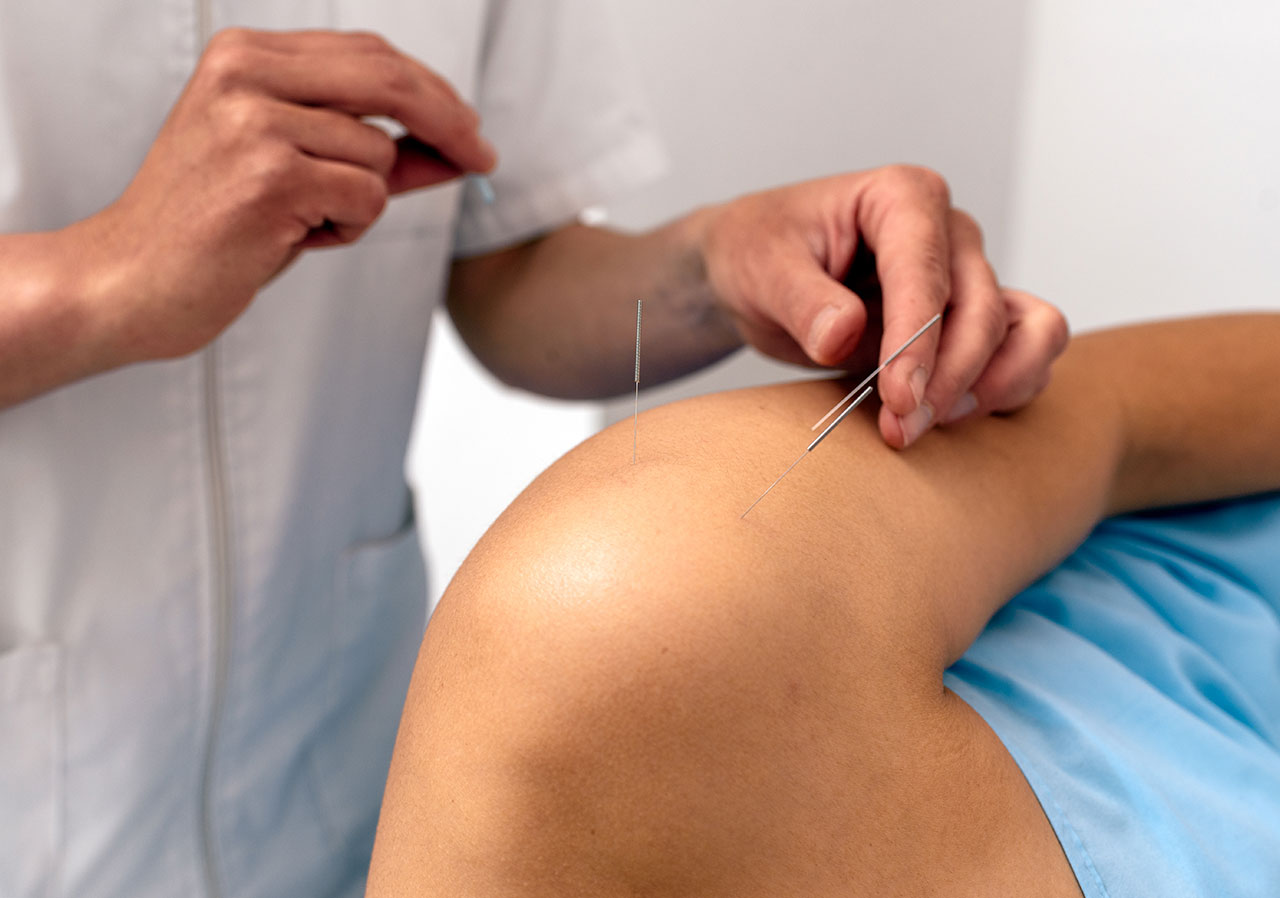Functional Dry Needling and How it Works
Functional dry needling (FDN) is a therapeutic technique used by healthcare professionals, including physical therapists, to treat muscular pain and dysfunction. It involves the insertion of thin, solid needles into specific trigger points or tight bands of muscle tissue to alleviate pain, reduce muscle tension, and restore normal muscle function. Here’s how FDN generally works:
Assessment: Before performing functional dry needling, the therapist assesses the patient’s condition by performing a thorough examination. This assessment helps identify the specific muscles, trigger points, or dysfunctional areas that may benefit from dry needling.
Targeted Needle Insertion: The therapist selects sterile, appropriate sized acupuncture needles for the target tissue, and inserts them directly into the identified trigger points or tight muscles. The insertion is usually painless or may cause minimal discomfort.
Trigger Point Stimulation: Once the needle is inserted, the therapist may manipulate it by gently moving it up and down or twirling it. This technique aims to stimulate the trigger point, causing a local twitch response (LTR). The LTR is an involuntary, brief contraction of the muscle fibers and is considered an essential therapeutic response.
Local and Systemic Effects: The LTR triggered by the needle insertion serves multiple purposes. Locally, it can help release muscle tension, improve blood flow, and reduce the activity of pain receptors. Systemically, it can initiate a cascade of physiological responses, including the release of endorphins and other natural pain-relieving substances, as well as modulating the nervous system’s sensitivity.
Muscle Function Improvement: Through the release of tension, reduction of pain, and modulation of neural pathways, functional dry needling can restore normal muscle function. It can help improve muscle strength, flexibility, coordination, and overall movement patterns.
Supplemental Therapies: FDN is used as part of a comprehensive treatment plan that may include other physical therapy techniques, such as exercise, manual therapy, and rehabilitation exercises. These additional therapies help reinforce the benefits of dry needling and optimize the patient’s recovery.
It’s important to note that functional dry needling should only be performed by trained and licensed healthcare professionals who have a thorough understanding of anatomy and proper needling techniques. It is typically used as a component of a larger treatment plan tailored to the individual needs of the patient. The physical therapists at Utah Physical Therapy have years of FDN experience and can incorporate the treatment into your plan of care safely and effectively.
